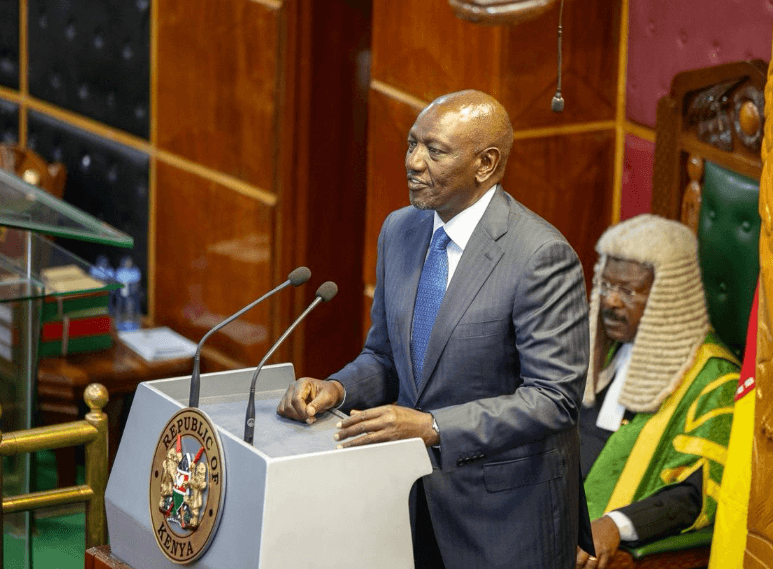The first ancient DNA study from the East African coast has been published in London in the British Scientific journal 'Nature'.
It is the largest such study ever from the African continent and one that meaningfully restores the heritage of the Swahili people, pushing back against more than 500 years of colonisation of the region, whose effects persist even now.
A team of American researchers led by Kenyan-born anthropology professor Chapurukha Kusimba from the University of South Florida, Prof David Reich of Harvard Medical School, Prof Jeffrey Fleisher of Rice University, Prof Stephanie Wynne-Jones at the University of York along with Dr Esther Brielle, a post-doctoral scientist at Harvard Medical School genetics laboratory, came up with multiple findings from the decade-long study.
“Findings of the study bring out the African contributions, and indeed, the Africanness of the Swahili, without marginalising their Persian or Indian connections,” Prof Kusimba, who has carried out archaeological research at the Kenyan coast since 1986, said.
He said the findings speak to the relatedness that humankind shares.
“The results of this study are groundbreaking and serve as a template for doing anthropologically led science,” Kusimba said.
He said it contextualises the politics of research, perfectly illustrating why we cannot oversimplify the past.
The interpretation of the genetic data in the paper serves as a lesson that archaeologists and geneticists must find ways of working and listening to each other without the former being subordinate to genetic analysis, Kusimba added.
"This work shows how ancient DNA and anthropological research can work hand in hand and produce truly meaningful cutting-edge results," he said.
The researchers co-authored an Op-Ed titled, “Entwined African and Asian genetics roots of the medieval peoples of the Swahili Coast”. It has been carried by international newspapers in the US, Israel, Germany and the UK.
They note a surprise finding that Indians contributed in a central way to the Swahili people's ancestry. Around 1000AD, the initial stream of Asian migrants mixed with Africans at multiple locations along the East African coast, contributing about half the people’s ancestry, a mixture of 90 per cent from Persian and 10 per cent from Indians.
These findings coincide with the oldest Swahili oral story, The Kilwa Chronicles.
It tells of Persian (Shirazi) merchants or princes who immigrated to East Africa and contributed and assimilated into Swahili communities, building one of Africa's most successful civilisation. It, too, disproves the opposite viewpoint prevailing in colonial times that discredited Africans' contributions to Swahili towns.
Prof Reich said, "These findings contradict and complicate narratives previously advanced in archaeological, historical and political circles, contributing in a meaningful way to reclaiming heritage for the Swahili themselves."
The researchers reckon that early intermarriages were highly sex-specific, with predominant ancestry sources being male Persian individuals and predominantly African female individuals.
Their study drew from human remains from Manda and Faza in Lamu county, Mtwapa in Kilifi county, Makwasinyi in Taita Taveta county, Songo Mnara, Kilwa Kisiwani and Lindi in Tanzania, where present-day communities have strong traditions of connection to the people of the medieval coastal towns.
They aver that Persian males allied and married into local trading families and adopted local customs to enable them to become more successful traders.
"The fact that their children passed down the language of their mothers, and that encounter with traditionally patriarchal Persian or Arabians and conversion to Islam, did not change the Coast’s African matriarchal tradition and confirms that African women retained their culture and passed it down many generations."
The legacy of the medieval Swahili civilisation is a source of extraordinary pride in East Africa as reflected in Kiswahili being the region’s lingua franca.
Kiswahili is among the 10 most widely spoken languages in the world, with more than 200 million speakers spread in more than 14 countries that include Kenya, Tanzania, Uganda, Rwanda, Burundi, Democratic Republic of Congo, South Sudan, Somalia, Mozambique, Malawi, Zambia, Comoros on the African continent and as far as Oman and Yemen in the Middle East.
South Africa and Botswana have introduced the teaching of Kiswahili in their schools, while Namibia has plans to implement the same. Kiswahili is today one of the official languages of the African Union headquartered in Addis Ababa, Ethiopia.
Two years ago, Unseco designated July 7 as Kiswahili Language Day to celebrate the language globally during its 41st member states meeting in Paris, France, on November 23, 2021. This made it the first African language to be feted by the United Nations.
Commenting after the study findings were published, Dr Brielle said via email: "It was really exciting to find biological evidence that Swahili oral history is not mythology but probably depicts Swahili ancestry as well as their cultural legacy.
"I had a fantastic time working and brainstorming with Chap, Jeff, Stephanie and our other collaborators on such important research questions, and I look forward to future projects together."
On his part, Prof Reich wrote, “It has been a great privilege to be part of archaeological research that has involved intensive engagement with local communities, and which has produced insights into the entwined African as well as Asian genetic heritage of coastal East Africans.”
Prof Stephanie Wynne Jones responded: "It has been so exciting to be part of this study using our work from Kilwa and in Songo Mnara. We are really grateful to our local collaborators for their part in the story."
















![[PHOTOS] Betty Bayo laid to rest in Kiambu](/_next/image?url=https%3A%2F%2Fcdn.radioafrica.digital%2Fimage%2F2025%2F11%2F3b166e2e-d964-4503-8096-6b954dee1bd0.jpg&w=3840&q=100)
